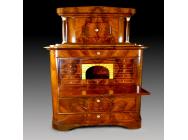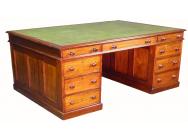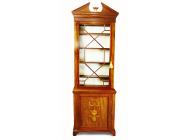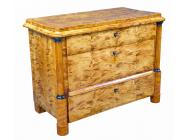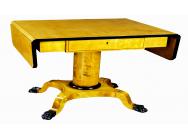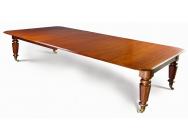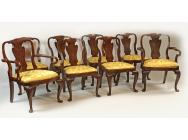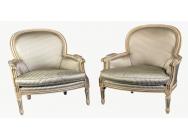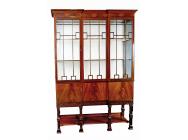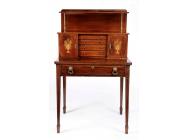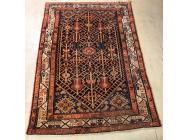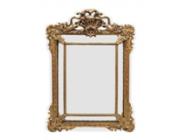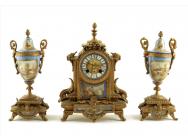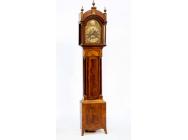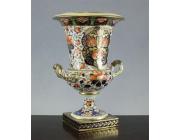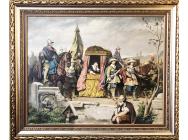SYNOPSIS: Biedermeier es el estilo del diseño de los muebles de Alemania y Austria durante los años 1815-1848. Inspirado en líneas del Imperio, las depura, las simplifica, las populariza y establece nuevos cánones de belleza y elegancia ligados a la practicidad, a la economía y mínimo ornamento. Cuando progresó el período sinembargo, el estilo ha movido desde la rebelión temprana contra el exceso de la era Romántica, a las clases cada vez más prósperas demostrando su nueva abundancia. Muchos diseños únicos fueron creados en Viena. Esto es porque perfeccionaron el uso del material, de la construcción, la originalidad del diseño, y la calidad del trabajo de ebanisteria. Todo estas técnicas el ebanista las tuvo que dominar antes de ser admitido a la liga de ebanistas principales aprobados. Los muebles del período (1815-1830) eran los más elegantes y neoclásicos en su inspiración. También este periodo entregó las formas más originales que la segunda mitad del período (1830-1848) careció siendo influenciado por las varias publicaciones de los estílos de Inglaterra, Francia e Italia.
PULSANDO SOBRE LAS FOTOS SE PUEDEN VER LOS DETALLES DE CADA MUEBLE
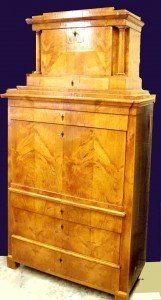
SECRETAIRE BIEDEMEIER A ABATTANT CON TABERNACULO
Las 3 décadas, señalando el fin de las Guerras Napoleónicas, cuando se fundó la Confederación Germana por el Congreso de Viena(1814-1815), hasta la Revolución Europea de 1848-1849, se llama el periodo “Biedermeier” en Europa Central. Durante esta época de cambios tan dramáticos, la media clase luchó contra la burguesía por tener más derechos, mejor gobierno y mejor educación. “Bieder” significa sencillo, y Biedermeier es el estilo señalando la emergente clase media, que quería crear su propio estilo llamado Biedermeier (de ellos para ellos) y se extendió en popularidad en los Países Bajos, y hasta Escandinavia, con algunas modificaciones.
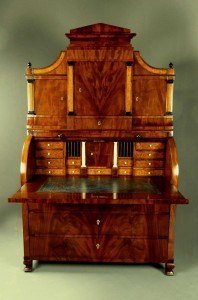
Secretaire Biedermeier Holandes - Muebles antiguos Anticuarium - Anticuarios España
Desde mi punto de vista como anticuario y estudiante del estilo Biedermeier, el concepto que todos los muebles Biedermeier fueron asequibles a la emergente clase media, es un poco de hipocresía idealista histórica, como todos que existen en la historia de todo el mundo. Los mejores muebles Biedermeier que admiramos actualmente “siempre adornaban y siguen adornando” los palacios y casas más influyentes de su época. Tengo la impresión que la burguesía de esta época tuvo que modificar (no bajar) sus estándares y dejar de lucir su gran opulencia del estilo Imperio o Barroco, posiblemente por la presión de la clase media. Así se crearon muebles que, aunque parecían más sencillos, fueron muebles de muy alto nivel creativo y de ejecución. Los muebles importantes fueron creados por maestros ebanistas reconocidos y licenciados como en el siglo XVIII en Francia. Los aprendices fueron examinados por su maestría de utilización de materiales, construcción, originalidad de diseño, calidad de ebanistería, antes de ser admitidos a la Liga de Licenciados Maestros Ebanistas. Una liga muy exclusiva! Como todos los muebles importantes en todo el mundo, también el mueble Biedermeier de alto nivel fue el privilegio de unos pocos, y es más asequible actualmente durante nuestra era!
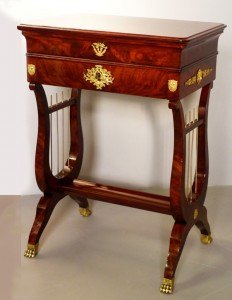
Mesa Auxiliar Costurero Biedermeier - Muebles antiguos Anticuarium - Anticuarios España

Comoda Biedermeier Imperio Vienna - Muebles antiguos Anticuarium - Anticuarios Españoles
Al principio de la época Biedermeier(1815-1825), los muebles se realizaron principalmente de caoba oscura, y con la influencia del estilo Imperio. Generalmente, antes de 1830, la caoba era la madera más utilizada en el mueble Biedermeier y gradualmente substituido por el nogal. La adopción de caoba, una madera importada, a la que se solía dar un acabado claro, causó que los ebanistas dieran acabados parecidos a la caoba, a los muebles de nogal, peral, y haya.
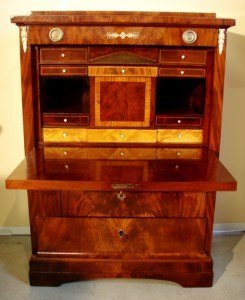
Secretaire Biedermeier Imperio Caoba - Muebles Antiguos Anticuarium - Anticuarios España
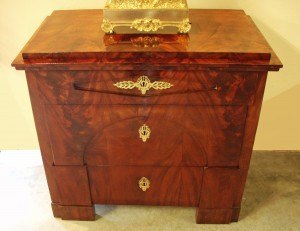
Cómoda Biedermeier Caoba - Muebles Antiguos Anticuarium - Anticuarios España
Con el paso del tiempo, los ebanistas Biedermeier empezaron a crear muebles de maderas claras como abedul, haya veteada, peral, cerezo, y empezaron a enseñar una gran independencia de diseño y estilo, casi arrogante hacia lo establecido.
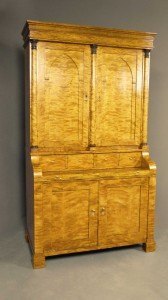
Librería Bureau Biedermeier Abedul - Muebles Antiguos Anticuarium - Anticuarios España
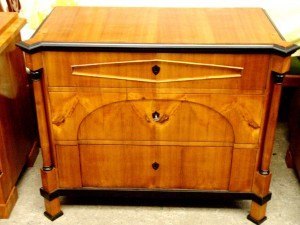
Cómoda Biedermeier Arce - Muebles Antiguos Anticuarium - Anticuarios España
Los ebanistas Vieneses, ya no buscaban inspiración en los muebles Franceses e Italianos, y aunque muebles de la temprana época todavía llevaban elementos de los estilos Directoire e Imperio con sus típicos adornos de bronce dorado, fueron de diseños muy originales, luciendo su alto entendimiento de forma y proporciones.
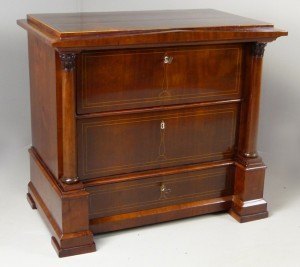
Cómoda Biedermeier x-Principe Vladimirovitch - Muebles Antiguos Anticuarium - Anticuarios España
Unos años después, las maderas autóctonas fueron utilizadas principalmente por sus precios más asequibles, especialmente chapa de nogal sobre pino o pinotéa. Filetes y marquetería de formas lineales fueron los elementos principales de adorno, como también la coordinación de vetas de nogal y otras maderas, dejando sus partes más claras para los extremos de los muebles.
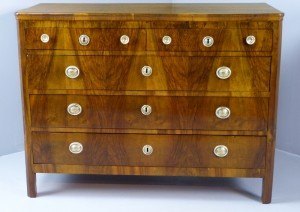
Cómoda Biedermeier Nogal - Muebles antiguos Anticuarium - Anticuarios España
A veces los ebanistas utilizaron álamo negro, ojo de pájaro de arce, y maderas de color como cerezo o peral que se hicieron muy populares, y también adornaron sus creaciones con pintura negra (ebanización) o de oro, como también adornos de calamina fundida y dorada, en vez de los bronces elaborados al estilo Imperio.
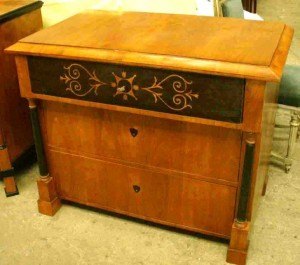
Cómoda Biedermeier con Pintura Negra y Pirograbada - Muebles Antiguos Anticuarium - Anticuarios España
La época Biedermeier también produjo una gran riqueza de diferentes tipos de asientos, con unas infinitas variaciones de la forma básica de “4 patas, un asiento, y un respaldo”. Desde 1815 hasta 1835, los ebanistas Biedermeier descubrieron que se podrían dar cientos de diferentes formas a “la silla”. Tapiceros también utilizaron su creatividad utilizando crin y varios colores de tela, especialmente terciopelo. Antes de 1830, cuando se utilizaba la talla como adorno, era talla no muy elaborada.
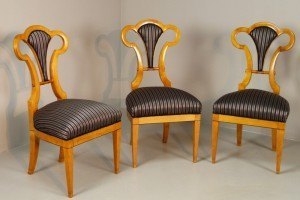
Sillas Biedermeier - Muebles Antiguos Anticuarium - Anticuarios España
A partir de 1830 hasta 1848, el fin de la principal época Biedermeier, la talla tomó forma más dominante y elaborada. Los ebanistas empezaron a incorporar diseños de tallas más “románticas” como cisnes, esfinges, delfines, garras de león, hojas de acanto, liras y guirnaldas.
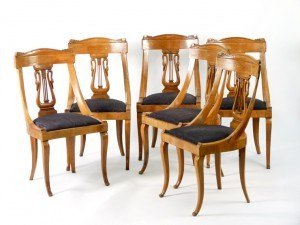
Sillas de Comedor Biedermeier - Muebles Antiguos Anticuarium - Anticuarios España
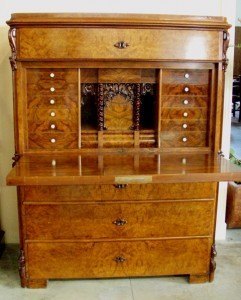
Secretaire Biedermeier 1830 Raiz Nogal - Muebles Antiguos Anticuarium - Anticuarios España
El estilo Biedermeier fue protagonista de nuevo en las exposiciones de arte en Viena en
el año 1896. Los visitantes de la exposición fueron tan impresionados y influenciados por este estilo tan glamoroso, que ahí empezó la época de Biedermeier Renacimiento y se hizo extremadamente popular por los ebanistas Europeos.
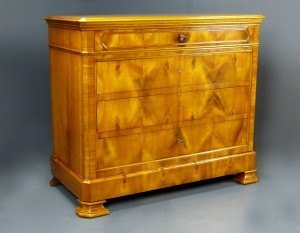
Cómoda Biedermeier Renacimiento - Muebles antiguos Anticuarium - Anticuarios España
Este periodo duró hasta la época Art Deco, que la influenció directamente, como también influenció el estilo Bauhaus.
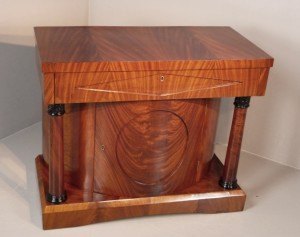
Consola Bufet Art Deco Biedermeier - Muebles Antiguos Anticuarium - Anticuarios España
Más detalles sobre el estilo Biedermeier en breve.


